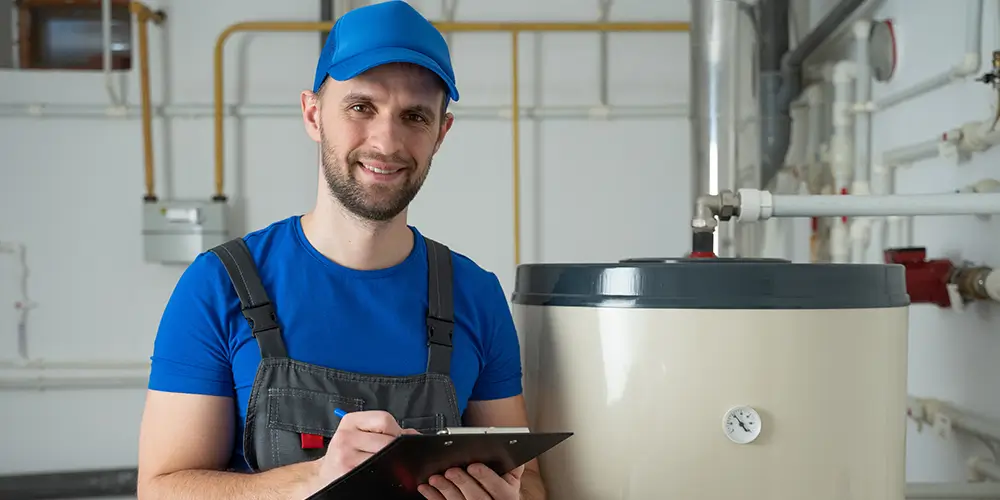All Things Plumbing & HVAC: The Orange Coast Plumbing Blog
Need to know what’s an emergency and which problems can wait? Which problems you can solve DIY? The Orange Coast Plumbing blog helps you understand common plumbing, heating, and air conditioning issues.
Knowing how to shut off the water supply could save you from a world of hurt if a big leak happens under your home.
A little knowledge goes a long way to prevent minor plumbing problems from growing into expensive issues.
Slab leaks often happen without warning. They can cause massive damage and even render your home uninhabitable. On a scale of 1-10 for plumbing disasters, they’re a 12.
But what exactly causes these apocalyptic leaks? And more importantly, what can you do to prevent them?
A drain bladder, or blow bag, is a heavy rubber balloon that attaches to a standard garden hose. It works like a miniature hydro jet with a high-pressure water stream to clear clogs and debris.
However, it can damage pipes if used incorrectly.
A leaking toilet is a serious plumbing problem. A toilet leaking at the base packs an even bigger punch. That’s because it’s easy to miss, it can cause significant damage to walls and flooring if not addressed promptly, and water can seep into lower levels of a building, creating a wet, damp environment for mold.
Here’s what you need to know.
A kitchen faucet is more than a fixture — it’s a focal point in your kitchen design. The right faucet can elevate your space while offering better functionality and convenience than a run-of-the-mill model.
With so many options available, it’s easy to get stuck.
Faucet drips contribute to up to 10,000 gallons of water waste per residence every year.
Some faucet repairs, especially those involving complex fixtures, necessitate a professional repair. But most leaky faucets can be fixed DIY without too much fuss.
Faucets endure heavy use and abuse. They’re exposed to corrosive minerals and chemicals in water, extreme temperature changes, and unkind human treatment.
It should be no surprise they sometimes spring leaks or cease to work altogether.
Fortunately, most common faucet problems are easy to fix.
Even a pinhole leak in your slab foundation will offer warning signs, and drainage will slow in a sewer line long before the point of collapse.
Regularly inspecting your plumbing system will help you nip many problems in the bud. But you have to know where to look and what to fix.
On a scale of one to ten, a slab leak is the Chernobyl of plumbing disasters.
Not at first, but undetected, the leak grows and spreads, sometimes slowly and at other times in a burst. Untold damage ensues.
That biblical flood in your living room? It points to a slab leak.
If you’ve never heard of a slab leak, join millions of American homeowners.
They’re relatively uncommon but especially devastating. Your first experience with a slab leak may be to return to a flooded and ruined home. Yes, they can go from drip to deluge that fast, and they can be that catastrophic.
Plumbing leaks are a nuisance. Some might cause a small amount of damage.
But slab leaks are a different beast; they all but guarantee significant damage to your home. And should a slab leak occur in your home, you’ll need your insurance to help with an expensive and extensive repair.
Most homeowners have never heard of a slab leak until a slab leak wrecks their home.
How scary are slab leaks?
Very, if you value your home and property.












